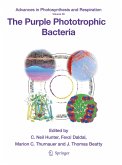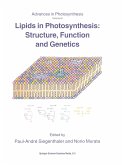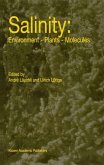Sulfur is one of the most versatile elements in life due to its reactivity in different oxidation and reduction states. In phototrophic organisms, the redox properties of sulfur in proteins, and of sulfur-containing metabolites, are particularly important in the interaction between the reductive assimilation processes of photosynthesis and reactive oxygen species that arise as by-products of electron transport chains. Thiol groups in proteins and metabolites are targets of reactive oxygen species, resulting in potential damage and at the same time giving rise to redox signal cascades that trigger repair reactions and adaptation to environmental stress. Further, reduced sulfur compounds play a prominent role as electron donors for photosynthetic carbon dioxide fixation in anoxygenic phototrophic sulfur bacteria. Interest in the investigation of the multiple functions of sulfur-related processes has increased exponentially in recent years, especially in molecular and cellular biology, biochemistry, agrobiotechnology and ecology. This book provides, for the first time, in-depth and integrated coverage of the functions of sulfur in phototrophic organisms including bacteria, plants and algae; it bridges gaps between biochemistry and cellular biology of sulfur in these organisms, and of biology and environments dominated by them. This book is designed to be a comprehensive resource on sulfur in phototrophic organisms for advanced undergraduate and graduate students, beginning researchers and teachers in the area of photosynthesis, bacterial energy metabolism, biotechnology, plant nutrition, plant production and plant molecular physiology.
From the reviews:
"This book is volume 27 of the series 'Advances in Photosynthesis and Respiration'. ... The majority of authors are scientists well known from the literature. ... The book is supplemented by many instructive tables and figures ... and by a detailed numerical and alphabetical subject index. ... volume 27 should certainly be on bookshelves of photosynthesis laboratories and university or research libraries." (Z. Sesták, Photosynthetica, Vol. 46 (4), 2008)
"The book in general provides a comprehensive and integrative knowledge of sulphur biology in phototrophic organisms. ... The book is ... useful for students and researchers in chemistry, plant and microbial physiology, and molecular biology. It is specially designed for advanced level graduate students working in the area of photosynthesis and bacterial bioenergetics. ... The book ... is useful for students working in agro-biotechnology. ... I strongly recommend this book to libraries of universities and research institutions around the world." (Basanti Biswal, Current Science, Vol. 96 (4), February, 2009)
"The new volume of the Advances in Photosynthesis and Respiration acquaints us with the metabolism of sulfur in photosynthetic systems. ... the four chief editors, another 55 authors of the individual chapters participated in writing this book, scientists literally from all over the world. Thus, thanks to the editor of the Advances in Photosynthesis and Respiration, Prof. Govindjee, an up-to-date, complete and well classified review of the contemporary knowledge of the sulfur metabolism in phototrophs is now available to the scientific public." (D. Sofrova, Biologia Plantarum, Vol. 53 (3), September, 2009)
"The new volume of the Advances in Photosynthesis and Respiration acquaints us with the metabolism of sulfur in photosynthetic systems. ... the four chief editors, another 55 authors of the individual chaptersparticipated in writing this book, scientists literally from all over the world. Thus, thanks to the editor of the Advances in Photosynthesis and Respiration, Prof. Govindjee, an up-to-date, complete and well classified review of the contemporary knowledge of the sulfur metabolism in phototrophs is now available to the scientific public." (D. Sofrova, Biologia Plantarum, Vol. 53 (3), September, 2009)
"This book is volume 27 of the series 'Advances in Photosynthesis and Respiration'. ... The majority of authors are scientists well known from the literature. ... The book is supplemented by many instructive tables and figures ... and by a detailed numerical and alphabetical subject index. ... volume 27 should certainly be on bookshelves of photosynthesis laboratories and university or research libraries." (Z. Sesták, Photosynthetica, Vol. 46 (4), 2008)
"The book in general provides a comprehensive and integrative knowledge of sulphur biology in phototrophic organisms. ... The book is ... useful for students and researchers in chemistry, plant and microbial physiology, and molecular biology. It is specially designed for advanced level graduate students working in the area of photosynthesis and bacterial bioenergetics. ... The book ... is useful for students working in agro-biotechnology. ... I strongly recommend this book to libraries of universities and research institutions around the world." (Basanti Biswal, Current Science, Vol. 96 (4), February, 2009)
"The new volume of the Advances in Photosynthesis and Respiration acquaints us with the metabolism of sulfur in photosynthetic systems. ... the four chief editors, another 55 authors of the individual chapters participated in writing this book, scientists literally from all over the world. Thus, thanks to the editor of the Advances in Photosynthesis and Respiration, Prof. Govindjee, an up-to-date, complete and well classified review of the contemporary knowledge of the sulfur metabolism in phototrophs is now available to the scientific public." (D. Sofrova, Biologia Plantarum, Vol. 53 (3), September, 2009)
"The new volume of the Advances in Photosynthesis and Respiration acquaints us with the metabolism of sulfur in photosynthetic systems. ... the four chief editors, another 55 authors of the individual chaptersparticipated in writing this book, scientists literally from all over the world. Thus, thanks to the editor of the Advances in Photosynthesis and Respiration, Prof. Govindjee, an up-to-date, complete and well classified review of the contemporary knowledge of the sulfur metabolism in phototrophs is now available to the scientific public." (D. Sofrova, Biologia Plantarum, Vol. 53 (3), September, 2009)








